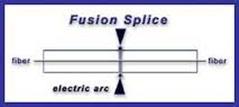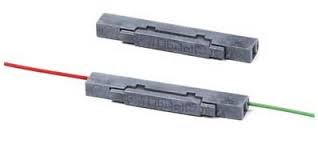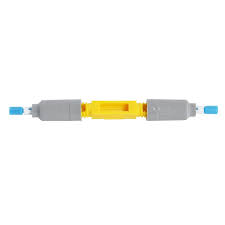|
What is fiber optics splicing ? Fiber Optics splicing is the process of jointing or holding two fibers together There are two methods of fiber optics splicing namely :- a. Fiber Optics Mechanical Splicing b. Fiber Optics Fusion Splicing What Is Fiber Optics Mechanical Splicing? In a mechanical splicing, two cleaved fiber tips are mechanically aligned to each other by using a precise housing alignment. An index matching gel is preinstalled between both end cleaved fiber tips to minimize back reflection and to maintain a low-loss optical interface. It is similar function to the fusion splicing except that the fibers are held together by mechanical means rather than by permanent fusion or welding technique. The mechanical splice performance depends on a. cleaving performance b. mechanical splice housing alignment design c. end-user skills and patience The Fiber Optics Mechanical Splicing Concept Basically the mechanical splice process involves five steps:- a. fiber optics stripping b. fiber optics cleaning to remove excess of plastic buffer c. cleaving the fiber optics ends d. inserting the fibers into the mechanical splice housing. This mechanical splice housing retains the fibers so their ends are in contact. Advantages of Mechanical Fiber Optics Splices
Disadvantages of Mechanical Fiber Optics Splices
Types of Mechanical Splices Samples of Mechanical Splices
1 Comment
Paul
7/10/2015 06:37:23 am
It’s a nice blog. It contains good information on <a href="http://www.reelomatic.com/track-trolley-cable-reel-system.html"> measuring fiber optic material </a>
Reply
Leave a Reply. |
AuthorI have been in the field of fiber optics since early 1990s. I gained fiber optics skills and knowledge via my working experience as end-user, main contractor and sub-contractor and finally as an optical fiber enterpreneur. Archives
January 2017
Categories
All
|





 RSS Feed
RSS Feed